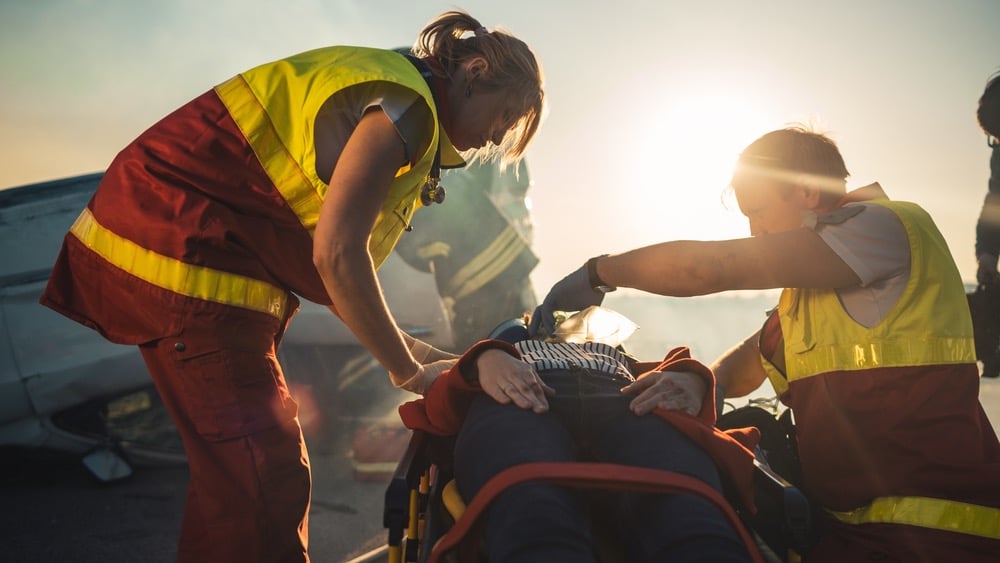5 Essential Supplies For Bleeding Control

Whether you work in an emergency medical field or a standard medical facility, it’s always a good idea to be prepared for the worst. Excessive bleeding can occur from a number of accidents and injuries, so it’s important to have the right supplies on hand to help control the bleeding.
Luckily, there are a number of supplies that can be instrumental for bleeding control in a variety of situations. By ensuring these essential items are accessible, you can help ensure that you’re always prepared to deal with excessive bleeding.
First Aid Kits Vs Bleeding Control Kits: What’s The Difference?
Before we get into the specific supplies you’ll need, it’s important to understand the difference between a standard first aid kit and a bleeding control kit. A first aid kit is designed to provide basic care for minor injuries and illnesses, while a bleeding control kit is meant for more serious situations where bleeding control is necessary.
A typical first aid kit might include items such as bandages, gauze, antiseptic wipes, and pain relievers. Bleeding control kits generally contain more specialised supplies, such as tourniquets, haemostatic dressings, and gloves. These supplies provide essential control of excessive bleeding while the victim is transferred to a medical facility.
5 Essential Tools For Bleeding Control
1. Gloves
When tending to a victim who is excessively bleeding, it’s important that first responders protect themselves. Gloves are essential for keeping blood and other bodily fluids off of your skin, which could lead to infection and blood-borne pathogens.
It’s also important to remember to change gloves and wash your hands if possible between handling the wound and other equipment, to avoid cross-contamination.
2. Pressure Bandages Or Gauze
Pressure bandages are one of the most important supplies for bleeding control. They can be applied directly to a wound to help stop the flow of blood. Look for pressure bandages that are easy to apply and come in a variety of sizes to ensure you’re prepared for any situation.
Similarly, gauze is an important tool for bleeding control for penetrating trauma injuries. From puncture wounds to penetrating wounds and perforating wounds, gauze can hold dressings in place and stop excessive blood flow.
3. Tourniquets
Tourniquets can be used to stop severe bleeding from a victim’s arm or leg. While these pieces of equipment are not ideal for every situation, they can be lifesavers in certain circumstances while waiting on further medical assistance.
For wounds below the knee or elbow, a tourniquet should be applied to the area of the limb that is closest to the heart. In an emergency situation where access to a tourniquet is limited, a makeshift tourniquet can be created from a long strip of cloth.
4. Haemostatic Dressing
If a victim has a bleeding injury on the torso or head, a tourniquet is not going to be effective. In these cases, a haemostatic dressing can be used instead to apply direct pressure to the wound. Haemostatic dressings are designed to promote clotting and stop bleeding control.
There are many different types of haemostatic dressings available on the market, and while a piece of cloth can be used as a makeshift dressing, a proper haemostatic dressing is much more effective.
5. Survival Blanket
While a survival blanket may not spring to mind as an essential item for bleeding control, it can actually be a very useful tool. When a victim suffers excessive blood loss, they can experience a sudden drop in body temperature, so it’s important to be able to keep them warm.
Regulating body temperature is important in stabilising a victim’s condition, especially for young children and elderly people.
Final Note
Maintaining an emergency bleeding control kit is an important part of being prepared for any situation. Bleeding is one of the leading causes of death in emergency situations, so it’s crucial that first responders have the supplies and knowledge necessary to effectively treat a bleed.
While this list covers some of the most essential items for bleeding control, there are other items that can be useful in stabilising a victim’s condition until they reach medical assistance.
If you’re searching for a reliable supplier of bleeding control equipment and general medical supplies, Midmed is your trusted choice. Supplying quality medical equipment to health care professionals and facilities across Australia, we’re here to help you assemble a suitable bleeding control kit for a range of emergency situations.
Contact us today for a product quote or speak to a member of our team to discuss how we can help.

